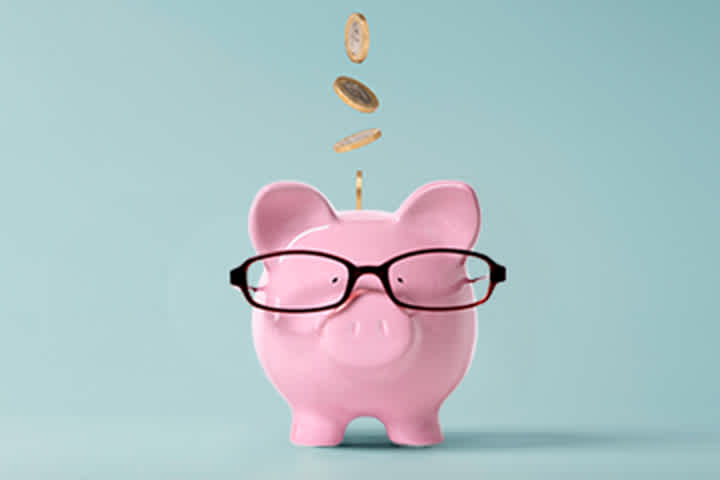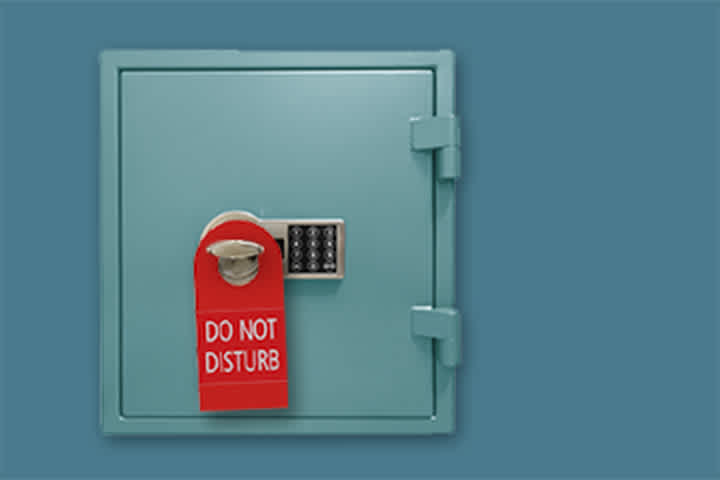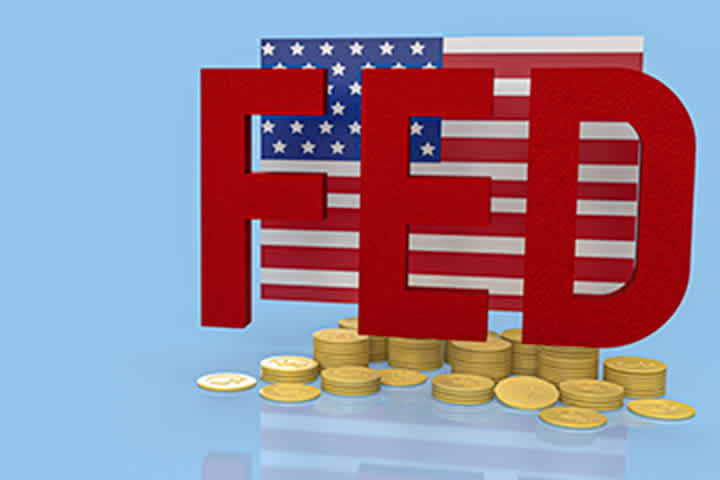Are there shortcuts to becoming financially independent?
Keytrade Bank
keytradebank.be
November 20, 2024
3 minutes to read
What if we said that the path to financial independence really exists? And that it doesn't have to take as long as you might think? We'll show you the options you have available to take that first small, but important step.
What is financial independence, exactly?
The goal is rather simple: the faster you can get on your own two feet financially, the better. You may have just got your first job, or you've been working for a few years and built up some savings, but you're still looking for that extra boost to take the next big step.
The way to get there is fairly straightforward to explain – the more you can set aside each month, the faster you'll reach your goal.
In other words, you should find a way to stop relying solely on your monthly salary, supplemented with a bonus or the thirteenth month's pay every now and then. The fastest way to success is to generate as much passive income as possible. Examples include:
- Dividends
- Interest
- Rental income
- And many more...
Financially independent does not mean wealthy
Financial independence means that you've built up enough assets over time to be able to finance your lifestyle (almost in full) without an active income. At the same time, you want to build up as much as you can in savings in the shortest possible time.
If you think that sounds unrealistic, you'd be wrong. Becoming financially independent is not the same as trying to become wealthy. Your goal is to be as comfortable as possible from a financial perspective. This means:
- No more worrying about monthly bills
- Preferring not to borrow too much
- Maintaining the freedom to travel when and where you want
- Creating the luxury of choosing a career based purely on enjoyment, not necessity
- And much more...
This means you want to buy yourself freedom both in the near and distant future. But what's the best way to go about it?
Step 1: Know your expenses
Every big adventure starts with a small step. Financial freedom starts with learning how to save and budget. And that starts by understanding your income and expenses. If we're being honest now, do you know what you currently spend each month?
- Map out your annual income and expenses as accurately as possible. Also include unplanned expenses such as repair costs, fines and so on.
- Analyse your monthly expenses. Which costs can you eliminate or reduce?
Step 2: Choose your approach
Work towards your own 'freedom fund' – a fixed amount (or more) that you try to set aside each month. Before you can add anything extra on top, you need to decide which financial horses you're going to bet on.
- Will you decide to put part of your salary into a savings account on a regular basis?
- Do you want to invest your current savings (in real estate, companies and so on)?
- Are you considering investing in the hope of seeing your passive income grow exponentially? If so, do you opt for shares, trackers, funds, government bonds and so on?
In each scenario, you're choosing to get a better return on your money. Yet there's a huge different in the potential return and the speed at which you may generate passive income.
As an example, renting out an energy-efficient home in a popular neighbourhood or investing in a promising start-up can give you a huge boost on the way to financial independence. On the other hand, the financial risks are greater and it requires greater follow-up on your end. Either way, there's no such thing as easy money. Unless you win the lottery, of course.
Step 3: Learn and adapt
Look at what works and what doesn't, and make regular adjustments. Seek advice from people with expert knowledge of the subject. Sometimes, it's also worth showing a little more patience, which can certainly be the case with investing.
Discover the three investment options at Keytrade Bank
Already thinking about more than just saving? At Keytrade Bank, we offer a range of investment options both for those who prefer to play it safe to start with and for those who like to take a calculated risk (you can read more about these investment risks here). Our three investment plans are as follows:
- Keyplan: Invest automatically through a diversified plan with limited risk (from €25 per month)
- Keyprivate: Let our experts manage your assets (from €15,000)
- Trading: You take control and invest in a range of shares, ETFs and funds, guided by our investment tools.
A few other helpful tips
The path to financial freedom is one of relaxation and peace of mind. Be sure to bear the following tips in mind:
- Keep it light: Save where you can, but maintain a sense of fun. In other words, make sure you can still enjoy life to the full.
- Keep it healthy: Don't push yourself too far; rather, move slowly in the right direction. Every additional euro in your pocket is one euro earned.
- Maintain a buffer: A separate savings account is always welcome in the event of unexpected costs such as medical costs, repairs or renovations.
Becoming financially independent isn't a pipe dream
With the right combination of saving, budgeting and investing, you can plot your own path to financial freedom. You're always welcome to contact Keytrade Bank to find out more about our range of saving and investment options, too. Start your journey with us today.
Other articles that might interest you
![blogHeader-USRecession]()
Will there be a recession in the US?
![blogHeader-cruise]()
As cruise companies gather steam, are their shares doing the same?
![iPad]()
Monthly video 2025
![blog-InvestingFor]()
A beginner's guide to buying shares in five steps
![blogHeader-Tesla]()
Is Elon Musk about to crash Tesla shares?
![blogHeader-RIP]()
Your family member dies: how to manage their banking
![GraphOfTheWeek]()
American optimism reversing: time to head for the exit?
![blog-Mag7]()
Have the Magnificent 7 lost their magic?
![blogHeader-kostenAamkoo]()
What costs are involved in buying a home?
![Defensieaandelen]()
An investment guide to Europe's military resurgence
![blogHeader-Aristo]()
Dividend aristocrats: a good beginner investment strategy?
![blogHeader-obesity]()
Has the obesity trade peaked?
![iPad]()
Monthly video 2024
![blogHeader-DeepSeek]()
How to invest in AI after the DeepSeek bomb
![Blog-Header-Invest?]()
What is investing, and why is it an option for you?
![blog-zorgvolmacht]()
12 questions and answers about a lasting power of attorney
![blog-inheritanceT]()
What if you are unable to pay the inheritance tax?
![blogHeader-GeertVanHerc]()
Investors missed out on many great opportunities in 2024
![blog-ouderKoppel]()
40 years of pension savings: what will you spend it on (literally)?
![blog-AstroMars]()
From FOMO to ZERO bank account? 5x pension savings to the rescue
![pension pilars]()
Start growing your pension sooner rather than later
![blogHeader-bestchoicesP]()
Pension savings returns: these choices give the maximum payout
![blogHeader-MonthlySavin]()
What monthly pension savings for a maximum return?
![blogHeader-VrouwenPensi]()
Why pension planning is even more important for women
![Woman lying down in a hamac on a terrace]()
Passive investing: less effort for a better return
![blogHeader-americaFirst]()
United States 1, Everyone Else 0
![blogHeader-retiredVersi]()
What would the retired version of you say to yourself?
![blog-whenInvest]()
When should you start investing? Seven potential key moments in your life
![blogHeader-Fire]()
FIRE: how hot is this financial trend and how does it work?
![blogHeader-TypeBeleger]()
What type of investor are you? Take the quiz
![stop-loss 2063917100]()
Did you just purchase shares? Why you should immediately set a stop-loss
![blog-EpargeEnfant]()
How can you teach your child to save? 12 tips
![blog-header-pocketMoney]()
Why a child deserves pocket money
![Blog-header-sleepingAccount]()
Do you have a dormant account? This is how you can check!
![GraphOfTheWeek]()
A potential worldwide trade war is claiming European victims
![blogHeader-animals]()
Ever thought of investing in the pet industry?
![GraphOfTheWeek]()
Have long-term interest rates once again started a 40-year uptrend?
![blog-header-USElection]()
Democrats or Republicans: which party is better for your investments?
![blog-spaargeld]()
Guide: how much you need in savings
![GraphOfTheWeek]()
Graph of the Week: Magnificent 7 vs 2000s Tech Bubble
![Active ETF]()
Actively managed ETFs: the best of both worlds?
![GraphOfTheWeek]()
Investing at new highs is an elevated idea
![blogHeader-InvestFood]()
6 reasons to invest in food
![blog-ZonderGeldzo]()
Checklist: travel without any money worries
![sharing-data 1153889713]()
Take a moment to read this before sharing your data
![belgian-shares 1908487531]()
Investing in Belgian shares: the dangers of too many domestic securities
![pay-favourite 1835827360]()
Investors, never pay too much for your favourite share!
![Man and woman embracing with a key in hand]()
Buying real estate together? Consider a rights of survivorship clause
![friends-cheaper-travel 1680186190]()
What your friends forgot to tell you about cheaper travel
Investing in football shares: what's the score?
![blog-Basisrente]()
Basic interest rate and loyalty bonus: what does your savings behaviour say about you?
![blog-kleinkindHel]()
Helping your (grand)children to buy a home: what are the options?
![blog-dividentenRe]()
Why high dividend yields can be a poisoned chalice
![blogHeader-SpaarrentenV]()
Comparing savings accounts: where do you put your money?
![blogHeader-WeinigTijd]()
3 ways to invest when you don't have much time.
![blogHeader-ChinaBelegge]()
Is it time to invest in Chinese stocks again?
![Graph of the week]()
Europe is no longer falling behind!
![blogHeader-fondsKiezen]()
How do you select an investment fund for your child?
![blogHeader-Veilig onlin]()
Secure online banking: how can you protect your finances?
![blogHeader-SparenVoorKi]()
How can I invest or save better for my child?
![blogHeader-Online reken]()
Opening an online bank account: what is holding you back?
![trackers capi-distri]()
The difference between distribution and accumulation for funds or trackers
![blogHeader-TauxInteretB]()
Will ultra-low interest rates make a comeback? Probably not…
![blogHeader-S&P500]()
Why the S&P 500 does and does not have a problem
![blogHeader-Robotica]()
Robotics: From science fiction to science
![blogHeader-Vastgoedaand]()
Property shares: ripe for a comeback?
![blog-geldMarktFon]()
Are money market funds an attractive investment?
![Graph of the week]()
Is joining the BEL20 actually good for you?
![blogHeader-HogereRendem]()
Is it the right time to invest in bonds?
![blogHeader-EersteHulp]()
Stock market records: some down-to-earth advice on how to respond to dazzling heights
![blogHeader-PeriodiekBel]()
Have you ever thought about investing for your children?
![blog-tweedeLening]()
Borrowing for a second home: what are your options?
![Graph of the week]()
Can we still say "Magnificent Seven"? Or should it be "2 Unlimited "?
![Blog-VoyageMars]()
How can you invest in space travel?
![blogHeader-ZelfOfLaten]()
Invest yourself or have someone do it for you: do you have to choose?
![Blog-Loan]()
How much can you borrow for a home?
![tell-tax-man 1044303100]()
What do you have to tell the tax man about your money and investments?
![iPad]()
Monthly video 2023
![myth-sustainable 1059639044]()
Five myths about sustainable investing
![Blog-Viellissement]()
How can you invest in an ageing population?
![Image article small caps]()
Small company shares with big opportunities?
![panneaux solaires]()
6 reasons why installing solar panels is still worthwhile in 2024
![Blog-Vote]()
How do elections affect the stock market?
![blog-holding]()
8 questions and answers about holding companies
![Picture article gold]()
Golden days? Why to invest in gold (or not)
![blog-aLouer-TeHuu]()
Is a buy-to-let property a smart investment?
![blog-marchéAfrica]()
Nigeria: a new hot spot for adventurous investors?
![roerende voorheffing]()
Exemption from withholding tax on dividends
![Photo article challenges stock investor]()
Will bonds beat shares in 2024?
![emerging markets 2]()
Investing in emerging markets: are investment funds a smarter buy than trackers?
![extra-softkey]()
Don't forget to create an extra access!
![blog-short]()
Shorting: what is it and how does it work?
![blog-goldenRules]()
The 10 principles of stock market success
![payer sans contact]()
The advantages and disadvantages of contactless payment
![blog energyInvestment]()
How to invest in the energy transition?
![free-credit-cards]()
Keytrade Bank has one of the few free credit cards on the Belgian market
![hacker cat]()
How to put phishers out of a job
Which sectors should remain overweight following the latest rate hike?
![8 tijdloze regels]()
8 timeless rules for investors
![Geert Van Herck]()
Investors are not afraid of risks! Or not yet?
![nervous-stock-market-200days-moving-average 534464629]()
Get ready for the last quarter!
![Biodiversity]()
Investing in biodiversity: can Wall Street save the rainforest?
Investing in AI: hype or a ticket to the future?
![blog-savingForSak]()
Saving for the sake of saving? Or with a goal in mind?
![blog-PrepareYours]()
How do you prepare financially for a longer life?
![blog-Recession]()
Handling recessions: a manual
![blog-inequal incomes]()
How to navigate a relationship with lopsided incomes?
![blog-financial conflict]()
Avoiding and dealing with conflicts on financial matters: a guide
![blog-sellInMayAndGoAway]()
Sell in May? Is it really such a good idea?
![blog-compte join]()
1 account for the both of you? Or separate accounts? Or a combo?
![myth-sustainable 1059639044]()
Make an impact with your Keyprivate
![diversification]()
How much diversification is enough for your portfolio?
![KID eurosign]()
From KIID to KID: new rules, better investment decisions
![intelligent mobility]()
Which investment opportunities are available on the road to smart mobility?
![blog endOfAmericanHegemony]()
Is the end nigh for American dominance?
![blog healthcareInvestment]()
A vitamin shot for your investments
![blog waterInvestment]()
Does water earn a place in your portfolio?
![economy-dip 1912291450]()
What is the difference between a tracker and a fund?
![Bonds]()
Bonds to rise in 2023?
![Visa Platinum on Silvery Background (top block)]()
6 things you need to know about your Keytrade Bank credit card
![iPad]()
Monthly video 2022
![equity-investors-economic-data 1891162513]()
What is technical analysis and how does it work?
![AchatPensionComp]()
How to buy real estate with your supplementary pension (even though you have not retired yet)
![Funds for free]()
Less costs? Yes, please.
![situation-russia-ukraine 1924764779]()
The situation following the Russian invasion of Ukraine
![something-new-investment-world]()
There's something new in the air in the investment world!
![thematic-funds 530010547]()
6 points to consider for thematic investing
![belgian-traders-american-stock-market-rush-reddit]()
Belgian traders tempted by American stock market rush and Reddit investors
![nervous-stock-market-200days-moving-average 534464629]()
Getting nervous about the stock market? Take a look at the 200-day moving average
![esg-rating 1169454484]()
How do you find out what a company’s ESG rating is?
![esg-alphabet]()
ESG's alphabet
![green-investing 1324554443]()
With or without the coronavirus: why green investing remains just as relevant as before
![impact-investment 1820196929]()
Impact investing: sustainable investments with that little bit more
![sustainable-investing 1613013514]()
Sustainable investing: what, why and how?
![inflation 2023622432]()
How can you make an investment portfolio inflation-resistant?
![invest-success 1033103851]()
All in our fund market at the same price
![impact-luck 1085827403]()
How to invest if you're on a tight budget
![offer-property 1982828150]()
No extra costs ...
![safe-contactless 1931956346]()
CARD STOP has a new number! 078 170 170
![inflation-savings 1051141721]()
This is what the tax authorities know about your money
![vix 1827107540]()
Investing in dividend shares: what to look for?
![700k-given 1577327479]()
10 ways to save money with apps
![Geert Van Herck]()
Monthly video 2021
![investment-podcasts 1433456570]()
Podcasts about money and investments (part one)
![stop-loss 2063917100]()
No group insurance plan? What are the alternatives?
![math-stock-market 68612446]()
Les plafonds fiscaux pour les années de revenus de 2020 à 2023
![investment-style 2045763443]()
Which investment style and which regions would benefit from renewed growth in interest rates?
![inflation-commodities 1046709259]()
Inflation? Grab some commodities for your portfolio!
![rising-star 441848857]()
Which shares will be the rising stars once interest rates start increasing again?
![financial-health 1414013324]()
10 things you can do within a day to improve your financial health
![stay-at-hotel 1676771632]()
Enjoy your stay at the hotel and pay less
![choose-trackers 1382662748]()
How to choose a tracker (ETF)
![safe-investing 268438862]()
Gold, cash and government bonds: how safe are safe havens?
![co-housing-rules 1613595520]()
Cohousing rules
![buffet-bezos-musk-p-KCm6xB9I-unsplash]()
The halo effect: why we are buying the shares of Buffett, Bezos and Musk
![investing-for-your-child 1340966087]()
Why investing for your child is a good idea
![timing-is-everything 390959932]()
Timing is everything: how to choose the right time to enter the stock exchange?
![iPad]()
La technologie préserve les investisseurs contre l'utopie
![funadamental-analysis 1555072109]()
What is fundamental analysis, and how does it work?
![micro-caps 516415369]()
Why (not) invest in micro-caps?
![rising-debt 85866430]()
Rising debt: is it a problem?
![safe-contactless 1931956346]()
How safe are contactless payments?
![capitalisation-or-distribution 562383328]()
Funds and trackers: do you opt for capitalisation or distribution?
![balance-investment 604545992]()
What do I do to balance my investments?
![share-bank-card 1080072473]()
CARD STOP has a new number! 078 170 170
![treacherous-stock-market 1033103887]()
The treacherous stock market
![society-without-cash 1932714896]()
On the way to a society without cash?
![second-residence 2015005337]()
Buying a second residence: with savings, investments or a loan?
![second-hand-online 571885318]()
A must read for when you spotted a second-hand bargain online
![megatrend 775242391]()
Always have a megatrend in your portfolio
![math-stock-market 68612446]()
Maths on the stock market
![impact-luck 1085827403]()
The impact of luck on investments
![handiest-financial-apps 1008711622]()
The handiest financial apps (and free as well)
![global-world-index 289143614]()
Are you investing really globally with a tracker on a world index?
![equity-investors-economic-data 1891162513]()
Equity investors look beyond gloomy economic data
![7-investment-themes 272484338]()
7 investment themes for 2029 (for which you can get a head start already)
![10-rules-lifelong-success 1761072161]()
Ten basic rules for lifelong success on the stock market
![share-bank-card 1080072473]()
Share everything with peace of mind. Except your bank cards.
![economy-dip 1912291450]()
Any dip in the global economy appears to just a passing blip!
![end-year-rally 1310382322]()
Are we heading into a year-end rally by the stock markets?
![coronablog 1670847745]()
Coronablog de Geert Van Herck: La panique atteint des sommets… énième épisode
![seven-myths 1756375427]()
Seven investment myths
![blended-family 1563671599]()
Blended family: shared savings account or keep things separate?
![emerging 1050235859]()
Emerging countries are lagging behind!
![first-aid-admin 2082725440]()
First Aid for Your (Financial) Administration
![tip-password-safe 735137110]()
Tips from an expert: how to keep your passwords safe
![coronablog 1670847745]()
Coronavirus blog Geert Van Herck: Property once again fails to deliver diversification bonus
![coronablog 1670847745]()
Coronavirus blog by Geert Van Herck: S&P 500 indicates a positive trend
![retirement-pension 2093526529]()
What retirement pension will you get later?
![financial-stress 1740212186]()
How can we cope with financial stress?
![browser-card 1186332706]()
Saving your payment card details in your browser: yay or nay?
![700k-given 1577327479]()
No extra costs. Yet 700,000 euros gladly given to you, our customers!
![china-dollar 1818989204]()
Can China make the dollar crash?
![us-dominance 1664904235]()
US stock market dominance not coming to an end yet!
![trackers-bubble 533763148]()
Are trackers the latest bubble on the financial markets?
![investment-podcasts 1433456570]()
Podcasts about money and investments (part two)
![mining-sector 1741881131]()
Anxious about inflation? Have you ever considered the mining sector?
![msci-emerging 129310280]()
Will the MSCI Emerging Markets index become the next big thing?
![inflation-savings 1051141721]()
What does higher inflation do to your savings and investments?
![gold 1680311416]()
Going for gold? Gold is apparently going for it.
![invest-success 1033103851]()
How can you invest successfully?
![share-suits-you 1134551189]()
Which shares suit you?












































































































































































